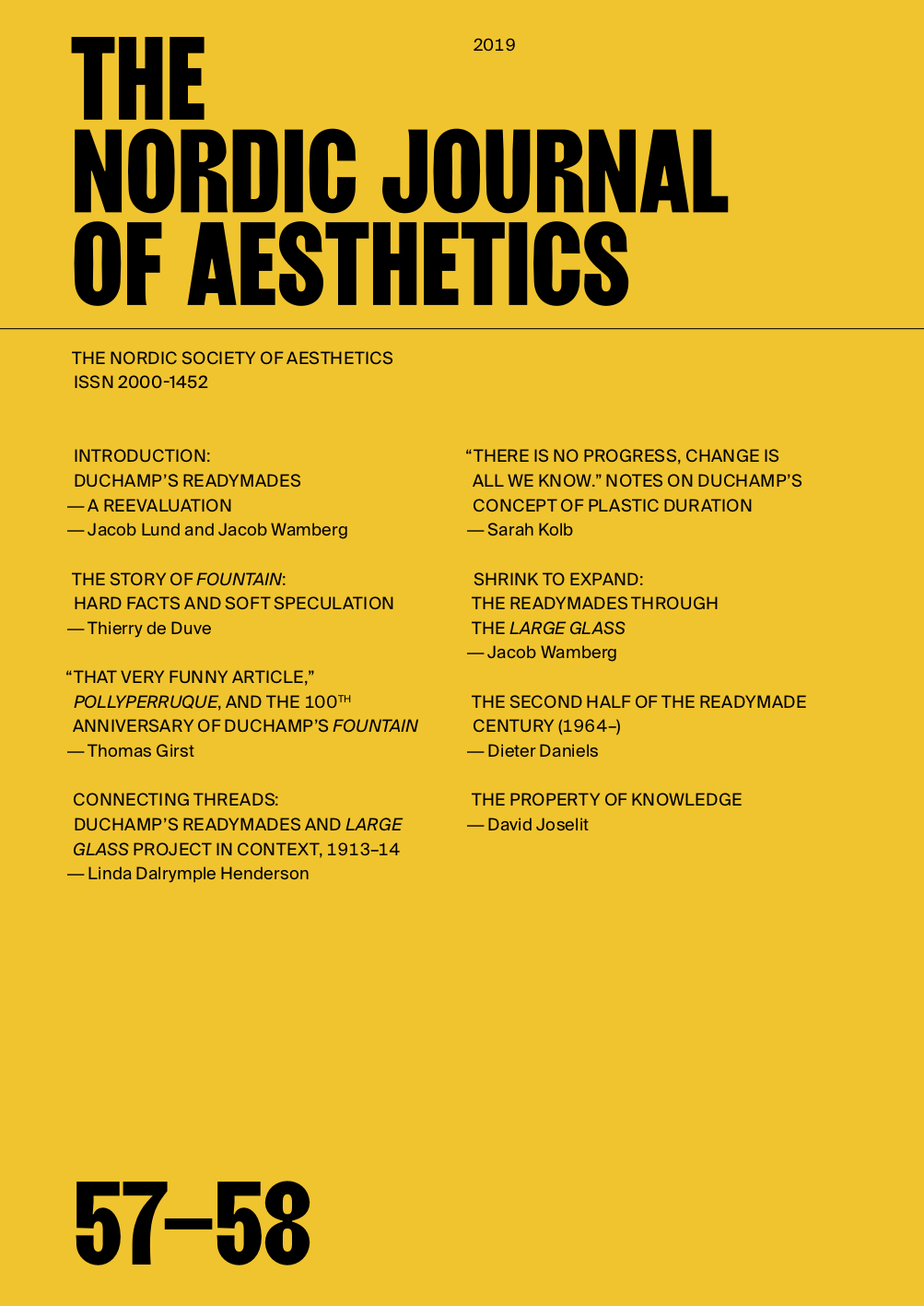“THAT VERY FUNNY ARTICLE,” POLLYPERRUQUE, AND THE 100TH ANNIVERSARY OF DUCHAMP’S FOUNTAIN
DOI:
https://doi.org/10.7146/nja.v28i57-58.114849Keywords:
Marcel Duchamp, readymade, Fountain, PollyperruqueAbstract
Within half a century, the status of Duchamp’s readymades changed from iconoclastic object to iconic sculpture. This contribution focusses on two of Duchamp’s readymades, one from 1915 and thus dated at the very beginning of Duchamp’s occupation with this subject matter, while the other is dated 1967, the very last object to enter this particular category within Duchamp’s oeuvre. André Breton remarked that “future generations can do no less than make a systematic effort to go back the stream of Duchamp’s thought and carefully describe its meanderings in search of the hidden treasure which was his mind.” It is with these suggestions in mind that, after the examination of an heretofore unknown readymade from the 1910’s and his collage Pollyperruque from the year before he passed away, final observations will examine the 100th anniversary of Duchamp’s Fountain to reassess the readymade’s potential as an analog object and social media phenomenon in the digital realm.
Downloads
Published
How to Cite
Issue
Section
License
Authors who publish with this journal agree to the following terms:
- Authors retain copyright and grant the journal right of first publication with the work simultaneously licensed under a Creative Commons Attribution License that allows others to share the work with an acknowledgement of the work's authorship and initial publication in this journal.
- Authors are able to enter into separate, additional contractual arrangements for the non-exclusive distribution of the journal's published version of the work (e.g., post it to an institutional repository or publish it in a book), with an acknowledgement of its initial publication in this journal.
- Authors are permitted and encouraged to post their work online (e.g., in institutional repositories or on their website) prior to and during the submission process, as it can lead to productive exchanges, as well as earlier and greater citation of published work (See The Effect of Open Access).




